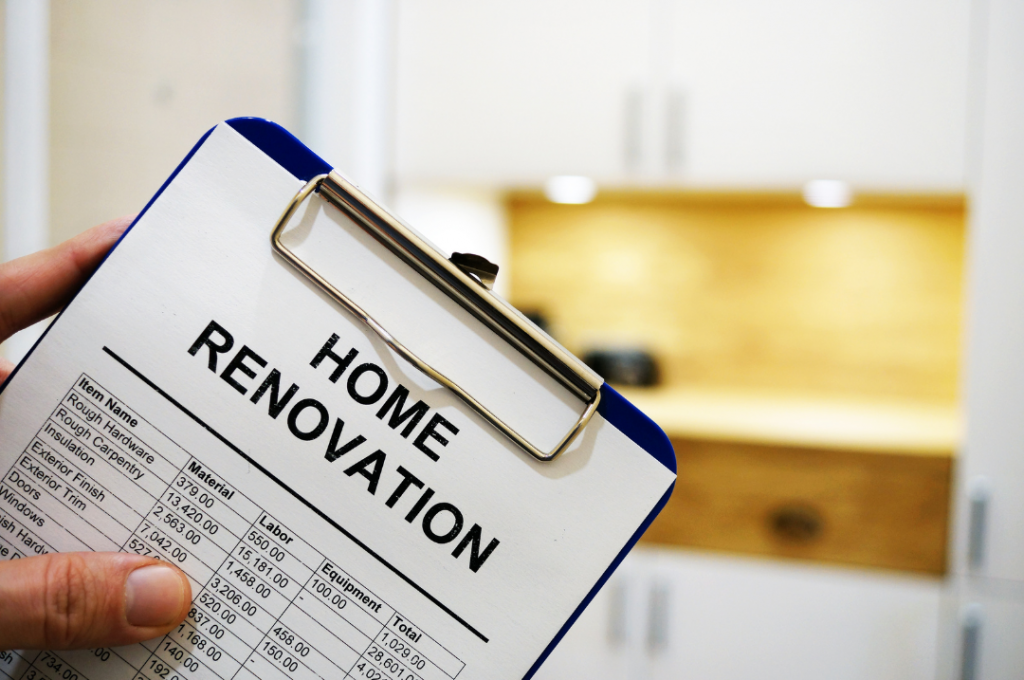
Bridging Loans vs. Home Improvement Loans: Which is Better for Renovations?
When planning a property renovation, choosing the right financing option is crucial. The two most common choices are Bridging Loans and Home Improvement Loans. But which one is best for you?
If you’re an inexperienced home buyer, property developer, or investor, this guide will break down the key differences so you can make an informed decision.
What is a Bridging Loan?
A bridging loan is a short-term, fast-access loan designed to “bridge” a financial gap. It’s commonly used in property development, buy-to-let (BTL) investments, and auction purchases, where fast funding is essential.
Key Features:
✔ Short-term loan (usually 3-18 months).
✔ Higher loan-to-value (LTV) ratios (up to 75% or more).
✔ No strict affordability checks – loan is secured against the property.
✔ Quick access to funds – approval within days.
✔ Available for business and investment purposes (including BTL properties).
When to Use a Bridging Loan ✅
- Renovating a Buy-to-Let (BTL) or investment property
- Auction purchases – needing fast completion ⏳
- Flipping properties – buying, renovating, and selling quickly
- Large-scale home renovations – needing substantial funds
- Bridging a mortgage delay – avoiding a broken chain
What is a Home Improvement Loan? 🛠️
A home improvement loan is a personal loan designed for homeowners who want to upgrade or refurbish their primary residence.
Key Features:
✔ Longer repayment terms (1-10 years).
✔ Lower interest rates than bridging loans.
✔ Strict affordability checks – requires proof of income and credit checks.
✔ Cannot be used for investment properties or business purposes.
✔ Slower approval process (weeks, not days).
When to Use a Home Improvement Loan ✅
- Upgrading your own home (not for business use) 🏡
- Minor renovations (kitchen, bathroom, extensions) 🛁🚪
- Lower-cost projects – typically borrowing under £50,000 💷
Bridging Loan vs. Home Improvement Loan: Key Differences 🔍
| Feature | Bridging Loan | Home Improvement Loan |
| Purpose | Business & investment properties | Primary residence only |
| Approval Speed | Fast (48 hours to 2 weeks) | Slow (weeks) |
| Loan Amount | High (£50,000 – £10M+) | Lower (£1,000 – £50,000) |
| Affordability Checks | Flexible | Strict (proof of income required) |
| Repayment Term | Short-term (3-18 months) | Long-term (1-10 years) |
| Interest Rates | Higher | Lower |
| Usage | Property investments, auction purchases, flipping houses | Home renovations for personal use |
Real-Life Example: Bridging Loan Success Story 🏡💷
John, an experienced property investor, purchased a run-down property at an auction for £180,000. He needed an additional £50,000 for renovations but couldn’t get a traditional mortgage in time. By using a bridging loan, John secured fast funding within 7 days, completed the renovation, and sold the property for £280,000, making a £50,000 profit after costs. Without a bridging loan, he would have lost the auction property and the opportunity to make a profit.
Which Loan is Right for You? 🤔
- If you’re a property investor, developer, or landlord → A bridging loan is the best option.
- If you’re a homeowner upgrading your residence → A home improvement loan is more suitable.
Pros & Cons Breakdown
Bridging Loan
✅ Fast funding for urgent purchases
✅ No strict affordability checks
✅ Ideal for investment properties & flipping
❌ Higher interest rates
❌ Short repayment terms (may need an exit strategy)
Home Improvement Loan
✅ Lower interest rates
✅ Longer repayment terms
✅ No need for secured assets
❌ Strict affordability checks
❌ Can’t be used for investment properties
Frequently Asked Questions (FAQs) 🤔💡
Can I switch from a bridging loan to a mortgage?
Yes! Many investors use bridging loans to fund purchases and then refinance with a traditional mortgage once renovations are complete.
What are the risks of using a bridging loan?
Bridging loans have higher interest rates and must be repaid within a short period. If your exit strategy fails, you might face financial strain.
Can a home improvement loan cover structural repairs?
Yes, but only if it’s for your primary residence. If the property is for investment purposes, you’ll need a bridging loan instead.
The Bottom Line
Choosing between a bridging loan and a home improvement loan depends on your financial goals and property type.
If you need fast, flexible funding for investment or development projects, a bridging loan is ideal. But if you’re making small-scale renovations to your own home, a home improvement loan is the better choice.
At Sunrise Commercial Finance, we specialize in bridging loans for property developers, investors, and landlords. We offer fast approvals, flexible terms, and expert advice to help you secure the right financing.
📞 Need Expert Advice? Contact Us Today!
Visit www.sunrisecommercial.co.uk or call us to discuss your options!
To keep informed of our latest property articles about all things property follow us on facebook
📞 Call us at 07939 091418
📧 Email: john@sunrisecommercial.co.uk
🌐 Visit: https://www.sunrisecommercial.co.uk/
#BridgingLoans #HomeImprovementLoans #PropertyFinance #ShortTermLoans #FastFunding #PropertyRenovation #InvestmentFinance #SunriseCommercial #BuyToLet #AuctionFinance #PropertyDevelopers #BridgingLoanExperts
